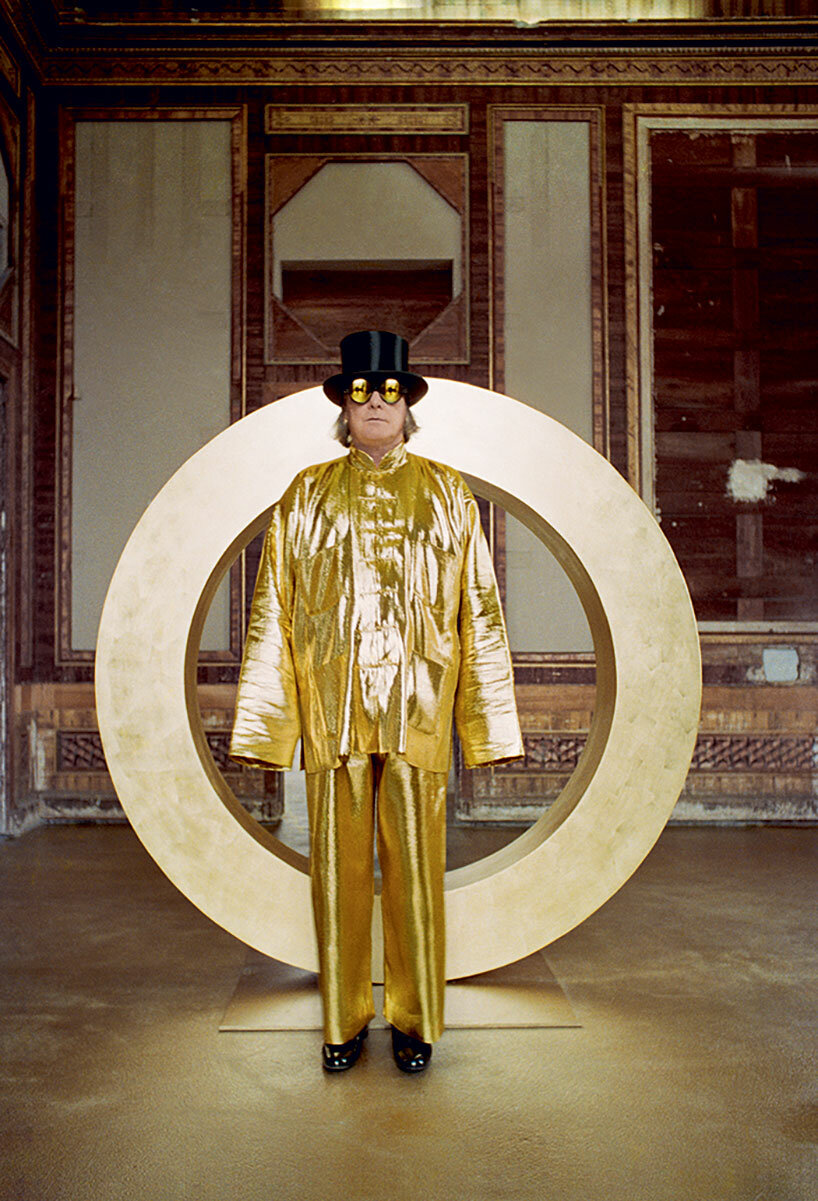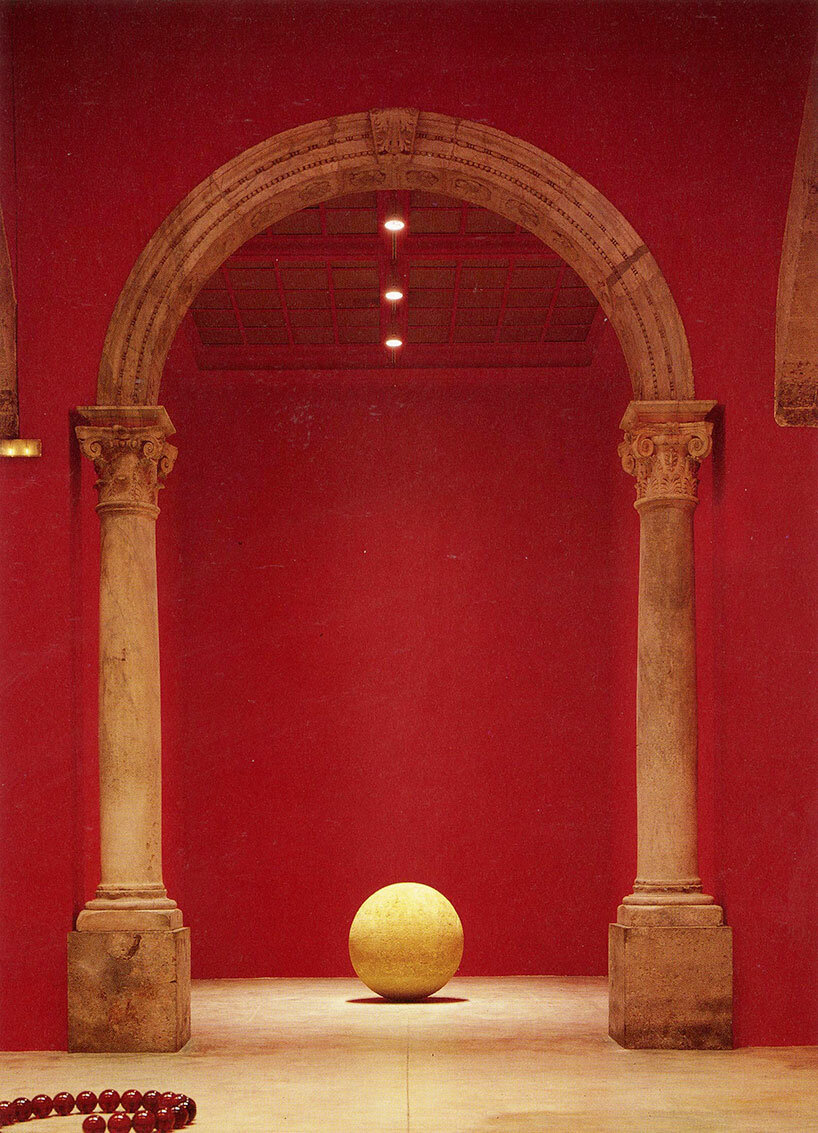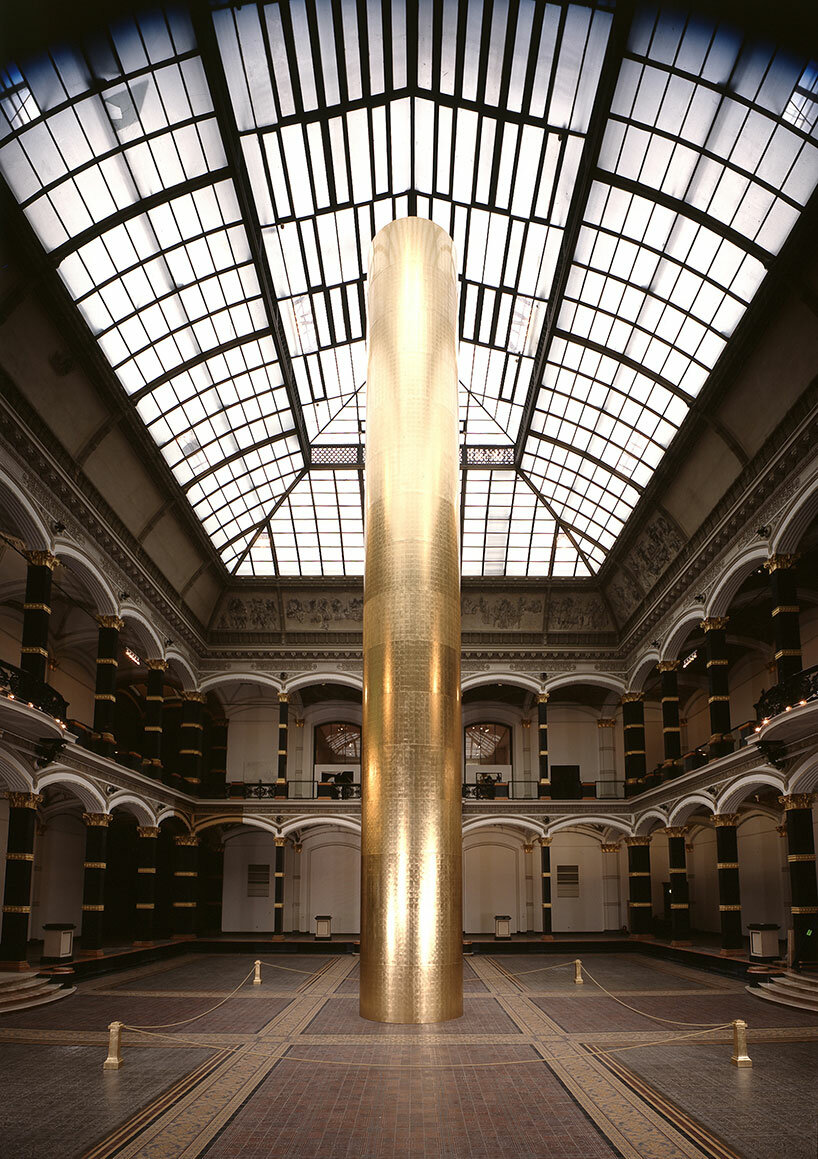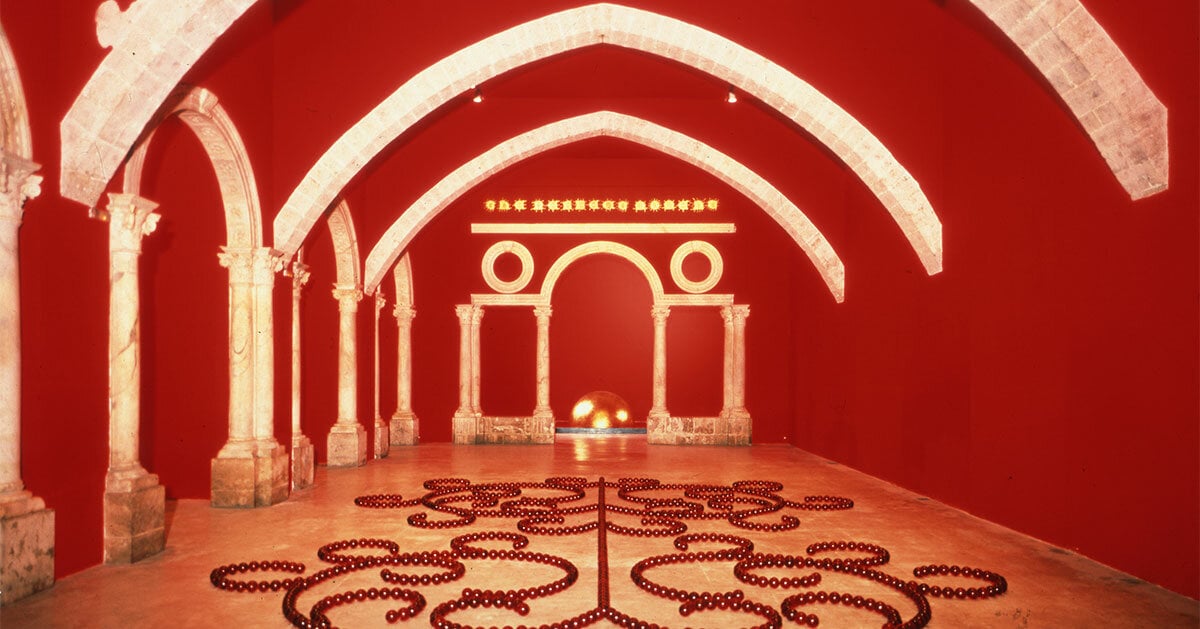james lee byars retrospective fills milan’s hangarbicocca with red hues & gilded sculptures
james lee byars at pirelli hangarbicocca
From October 12, 2023, to February 18, 2024, Pirelli HangarBicocca hosts a comprehensive exhibition to spotlight the work of iconic American conceptual and performance artist James Lee Byars. The show, which marks Italy’s first retrospective dedicated to Byars since his death in 1997, delves into the artist’s exploration of the deeper aspects of the world, blending mysticism, spirituality, and corporeality.
The exhibition brings together a vast array of sculptural works and monumental installations created from 1974 to 1997, interweaving refined materials, such as marble, velvet, and silk, with archetypal geometries, such as prisms, spheres, pillars, and Baroque-like objects. The rarely presented pieces come from international museum collections and are displayed in Italy for the first time.

James Lee Byars in front of The Door of Innocence, 1986-87. gilded marble. Toyota Municipal Museum of Art, Aichi Installation view, Castello di Rivoli Museo d’Arte Contemporanea, Turin 1989 | photo by Elio Montanari
A Glimpse into the Artistic Legacy of James Lee Byars
The exhibition, supported by the Estate of James Lee Byars, offers the public a rare opportunity to experience the work of a singular artist who has left an indelible mark on the history of art. The show is curated by Vicente Todolí and organized by Pirelli HangarBicocca (find more here) and Museo Nacional Centro de Arte Reina Sofía in Madrid (find more here), where a version of the exhibition project will be presented from April 25 to September 1, 2024, at the Palacio de Velázquez.
Visitors can explore a selection of Byars’ most iconic works, including large-scale installations that combine precious materials with minimal and archetypal geometries. The use of marble, velvet, silk, gold leaf, and crystal is evident in Byars’ work, while the presence of prisms, spheres, and pillars is a recurring pattern. The result is a play of symbolic and aesthetic cross-references between form and content.

James Lee Byars, The Tomb of James Lee Byars, 1986. Bernese sandstone ⌀100 cm. installation view, IVAM, Instituto Valenciano de Arte Moderno, 1995 © The Estate of James Lee Byars, courtesy Michael Werner Gallery, New York and London
colossal golden tower greets visitors to byars’ retrospective
The exhibition opens with a colossal piece called The Golden Tower (see designboom’s previous coverage of the piece, here). As guests enter, they are greeted by a massive golden tower that stands 21.5 meters tall. The artwork captures the artist’s fascination with how perfect shapes and unchanging materials interact. Byars first sketched out this idea in the early 1970s, originally planning for it to be over 300 meters tall. It finally became a reality in 1990 when it was shown at the Martin Gropius-Bau in Berlin.
Another standout piece in the exhibition is HEAR TH FI TO IN PH around this chair and it knocks you down (1977). This artwork includes a black silk tent that houses a gold chair from the nineteenth century, perched above a silk carpet embroidered in gold. The empty chair, lit from above, and the elegant surroundings bring to mind images from different Eastern traditions, like Buddha’s throne, a symbol of enlightenment through self-discovery, or the practice of offering seats to spirits in Shinto shrines. When Byars first displayed this work in 1977 at the Marian Goodman gallery in New York, he added a performance element. Dressed in black and hidden in the curtains, he shone a flashlight at the chair and exclaimed the phrase that gave the artwork its name: ‘Hear the first totally interrogative philosophy around this chair and it knocks you down.’

James Lee Byars, The Golden Tower, 1990. gilded steel 2000 x 250 x 250 cm. installation view, Martin Gropius-Bau, Berlin, 1990 © The Estate of James Lee Byars, courtesy Michael Werner Gallery, New York and London | photo courtesy Michael Werner Gallery, New York and London
about james lee byars
James Lee Byars was a leading American conceptual and performance artist of the 1960s and 1970s. Born in Detroit in 1932, Byars was always fascinated by Japanese culture, which exerted a deep influence on his artistic practice throughout his life. This influence can be seen throughout his work, which often combines motifs and symbols from Eastern traditions, such as elements of Nô theater and Zen Buddhism, with Western art and philosophy. Byars’s work often explored the ideas of perfection, cyclicity, and the human figure. He used a variety of media, including installation, sculpture, performance, drawing, and speech, to create what he called ‘mystical-aesthetic reflections’ on these themes.
One of the central aspects of Byars’s work was his relationship with the public. He often invited viewers to interact with his work directly, responding to the questions that he posed through his art. Many of his installations were designed to be performed by the artist himself. Since his death, this particular aspect raises questions about the presence-absence of the artist, who, throughout his life, focused his practice on his own persona and its depiction through actions, gestures, rituals, and clothing that had visual and symbolic connections with the works.





